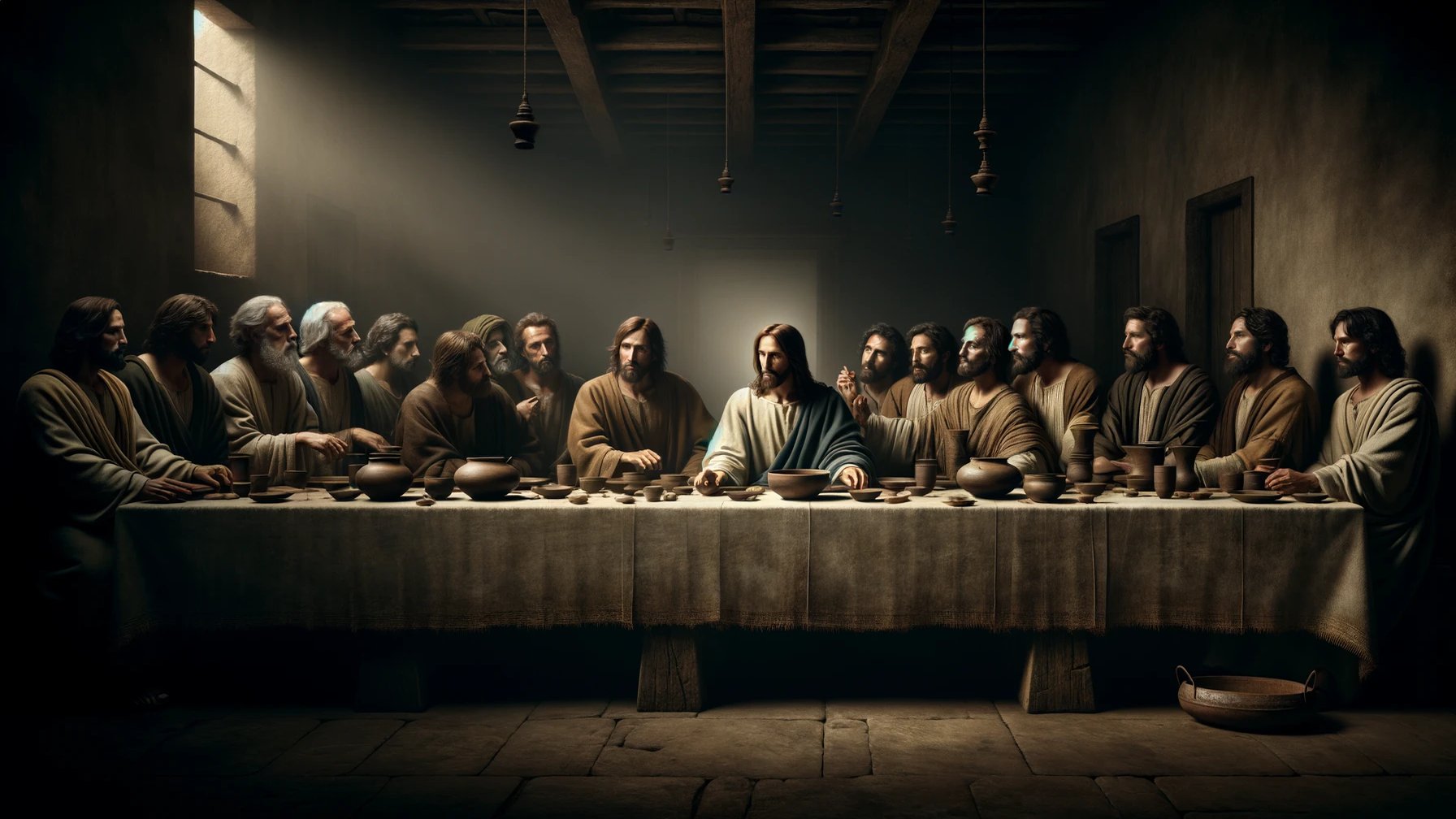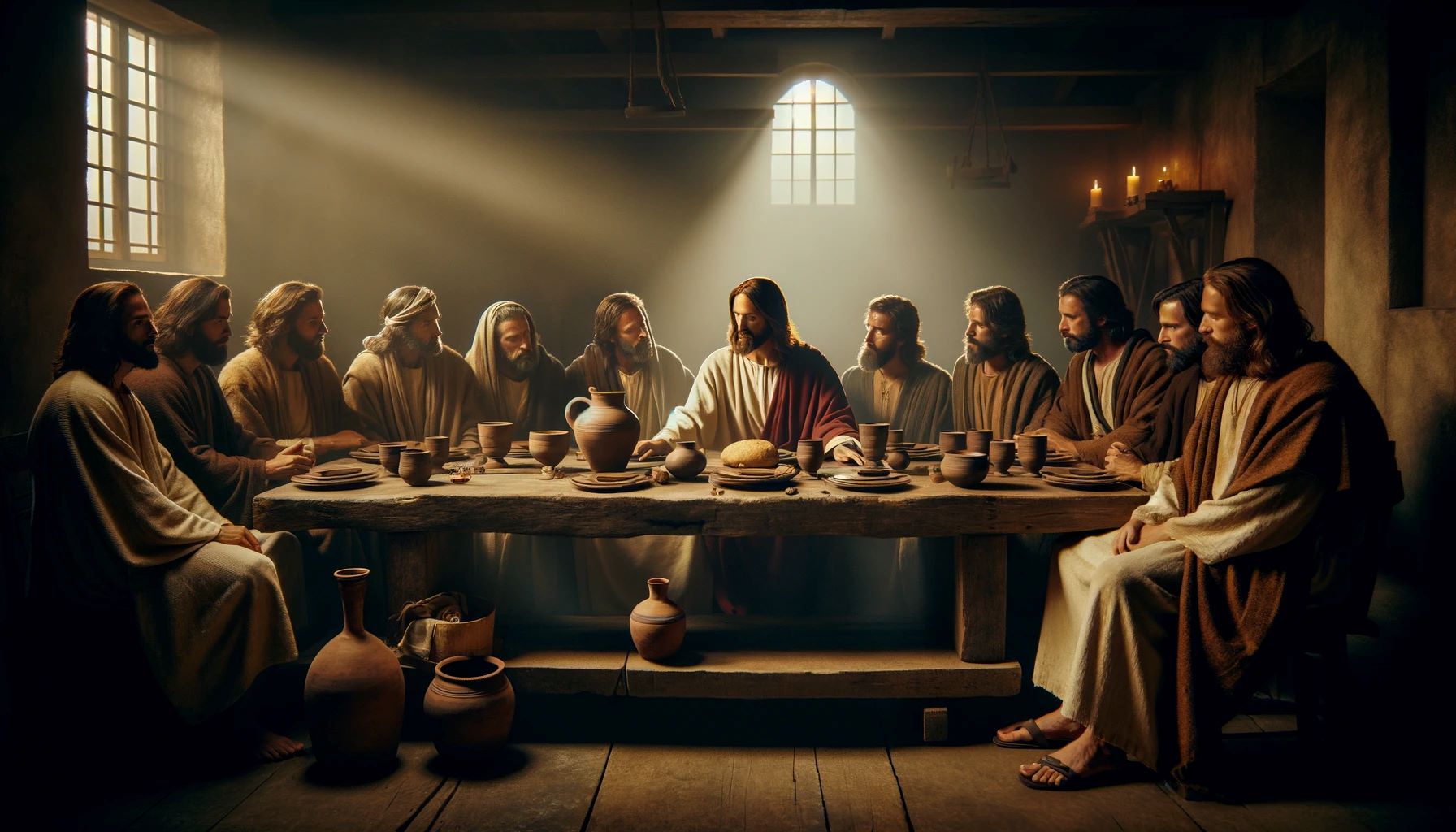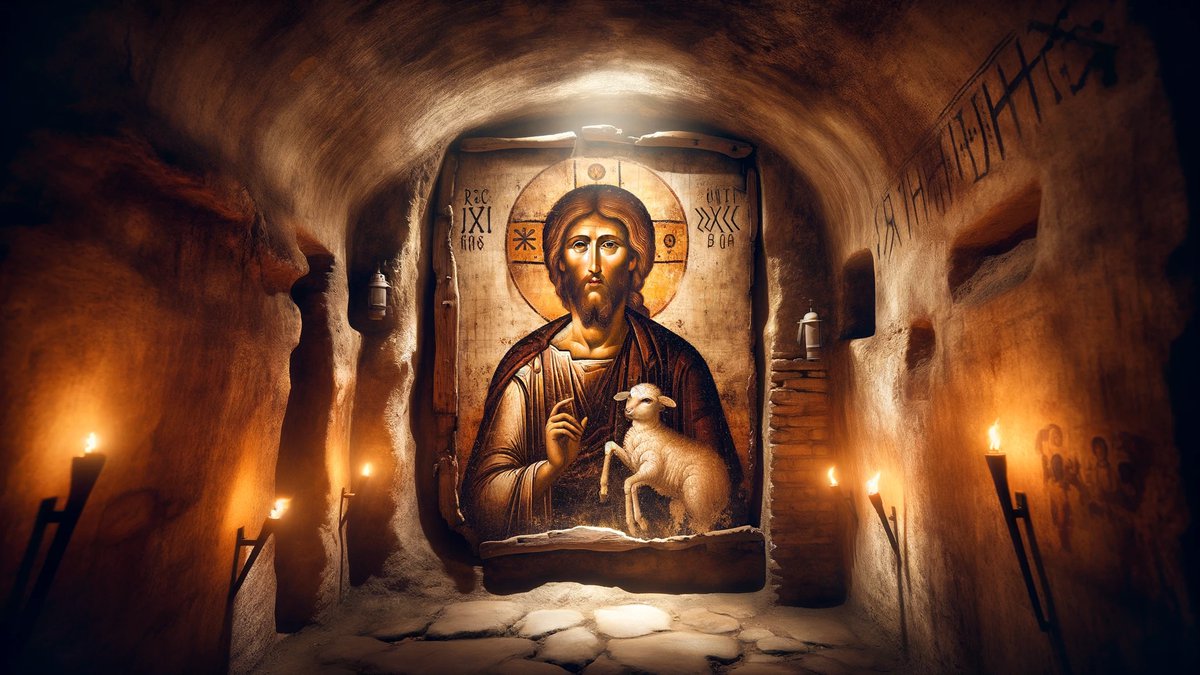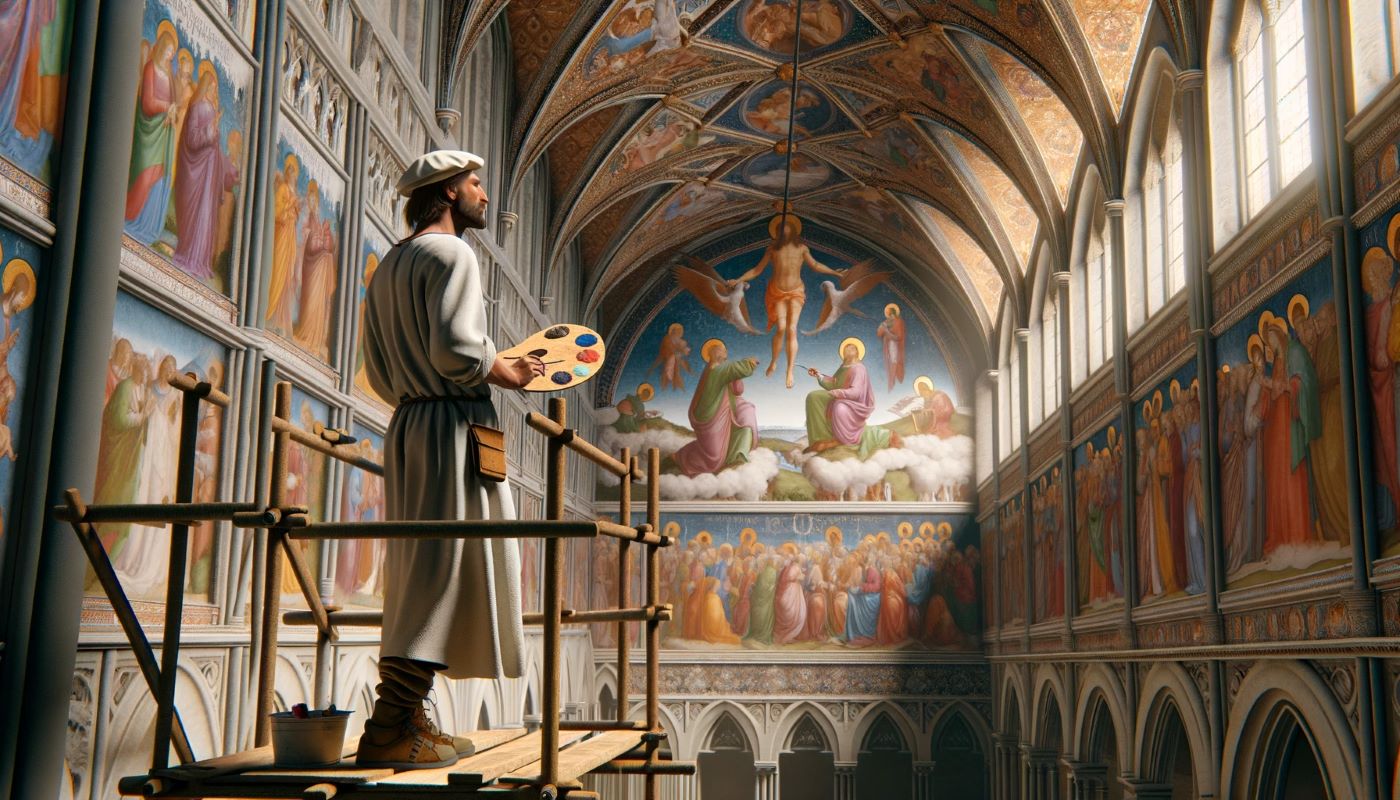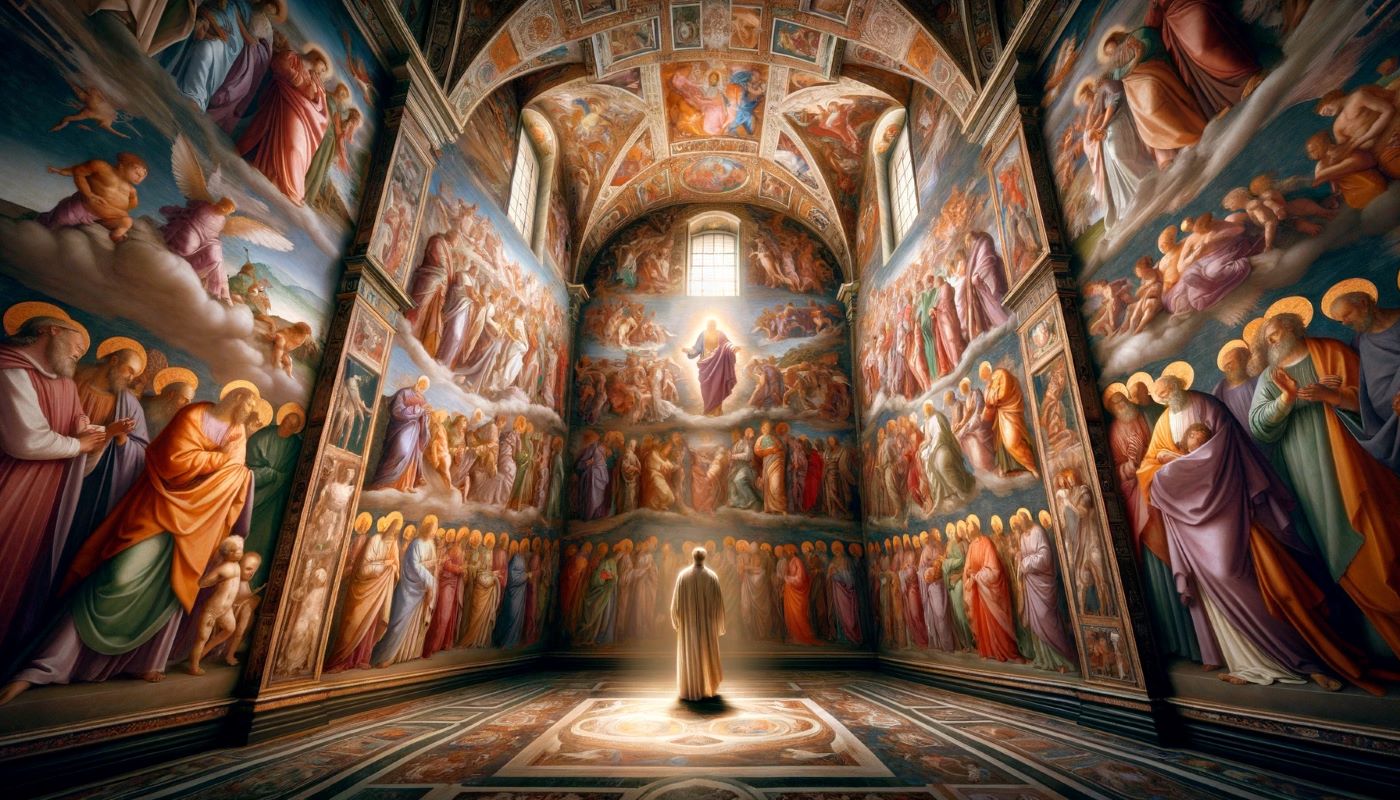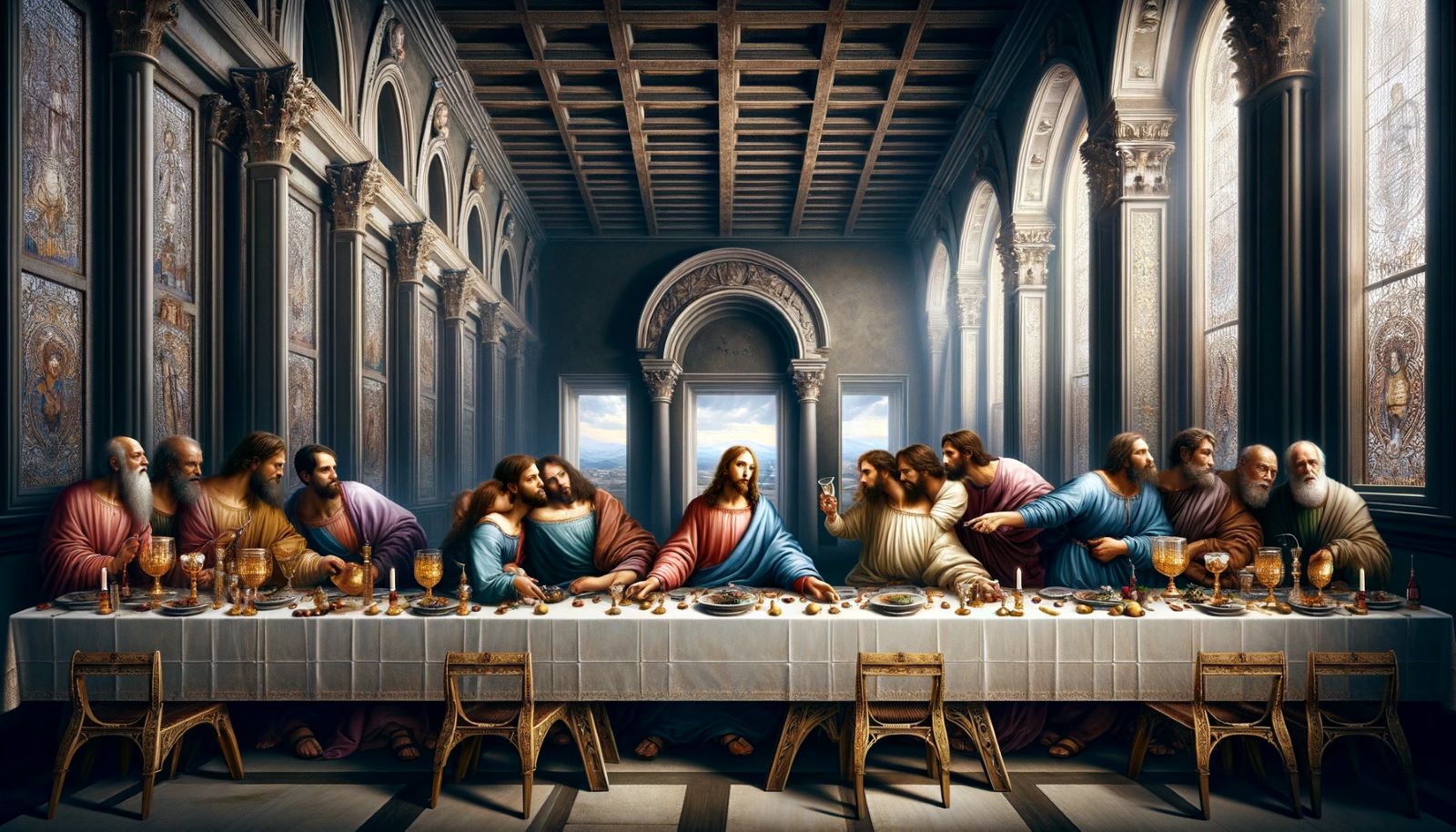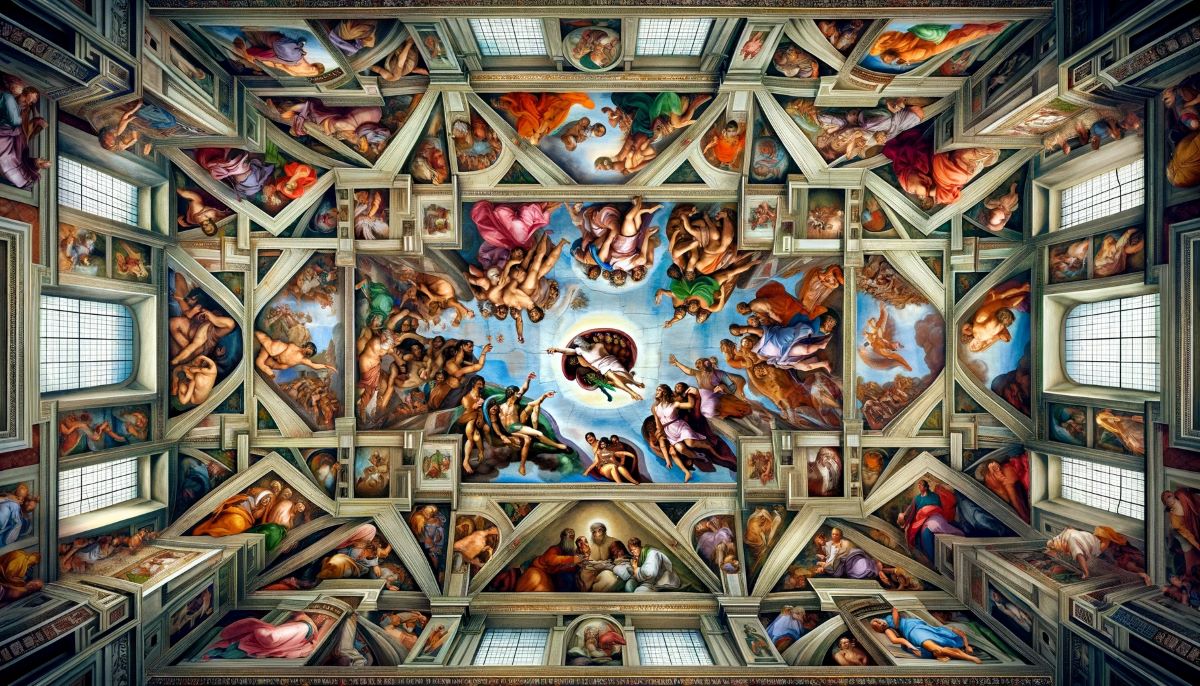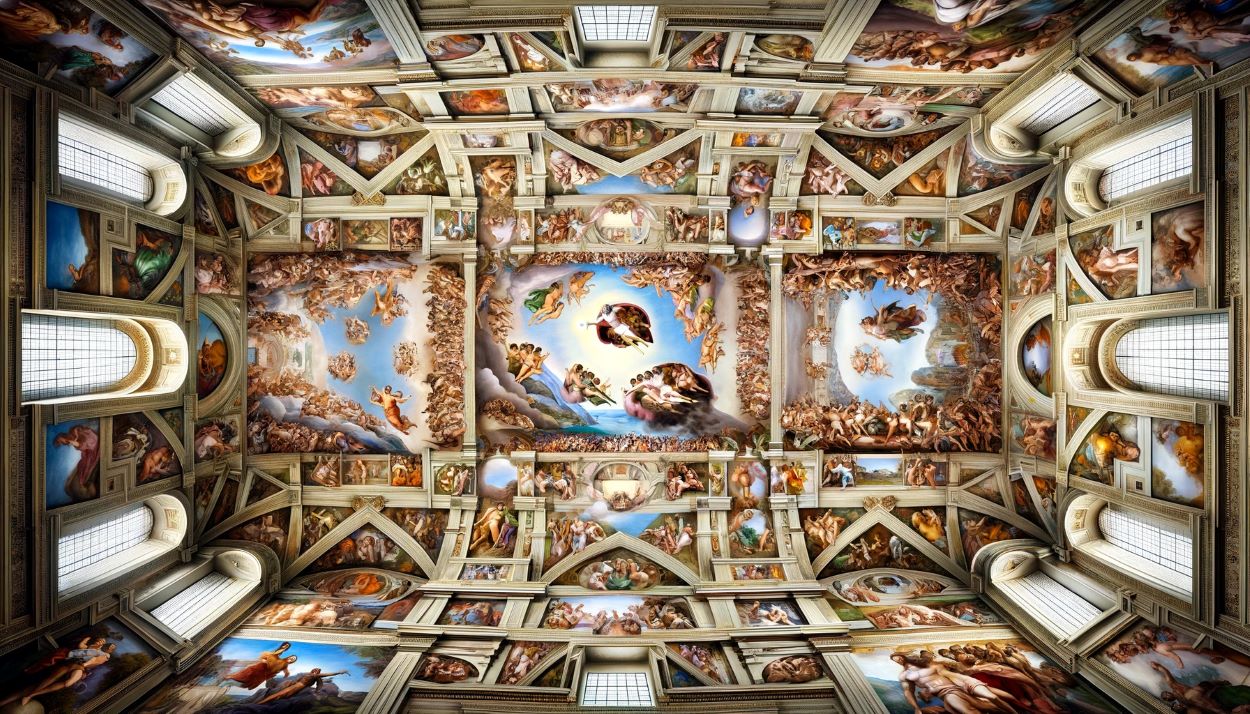Home>Theology and Spirituality>Where Is The Communion Cup In The Last Supper Painting
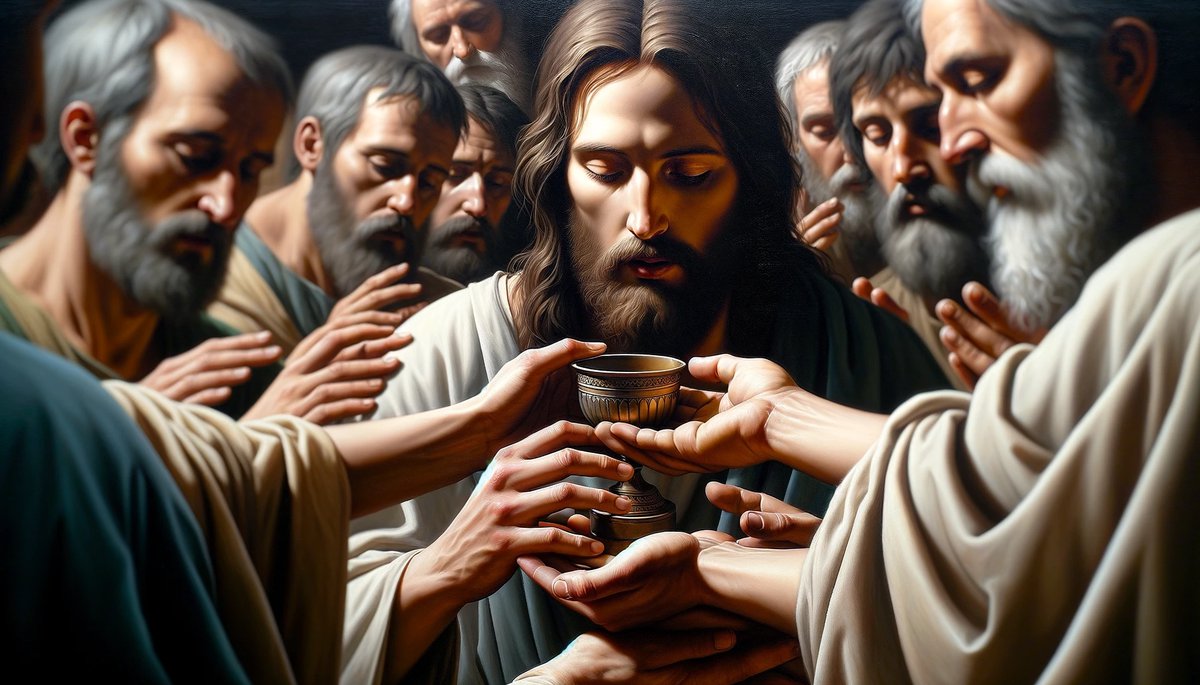

Theology and Spirituality
Where Is The Communion Cup In The Last Supper Painting
Published: February 19, 2024
Ericka Andersen, an editor at Christian.net, expertly merges digital strategy with content creation, focusing on faith and societal issues. Her communication skills enhance the platform's engaging narratives, fostering meaningful dialogue on belief's impact on society.
Discover the symbolism and significance of the communion cup in the Last Supper painting. Explore the theological and spiritual implications of this iconic depiction.
(Many of the links in this article redirect to a specific reviewed product. Your purchase of these products through affiliate links helps to generate commission for Christian.net, at no extra cost. Learn more)
Table of Contents
Introduction
The Last Supper painting, an iconic masterpiece by Leonardo da Vinci, has captivated the world for centuries with its profound portrayal of the final meal shared by Jesus and his disciples. This timeless work of art has sparked countless discussions and interpretations, drawing attention to its intricate details and symbolic significance. One of the focal points of analysis is the location of the communion cup within the painting. The communion cup, also known as the Holy Grail, holds immense spiritual and historical significance, making its placement within the Last Supper painting a subject of great interest and debate. In this article, we will delve into the background of the Last Supper painting, analyze its composition, explore the location of the communion cup, and unravel the profound significance it holds within the context of this revered artwork. Join us on this enlightening journey as we uncover the mysteries and symbolism surrounding the communion cup in the Last Supper painting.
Read more: What Is The Lord’s Supper Or Communion
Background of the Last Supper painting
The Last Supper painting, created by the legendary artist Leonardo da Vinci, is a monumental depiction of the final meal shared by Jesus Christ and his twelve apostles before his crucifixion. This iconic artwork, which adorns the walls of the Convent of Santa Maria delle Grazie in Milan, Italy, is renowned for its historical significance, artistic brilliance, and profound spiritual symbolism.
Leonardo da Vinci commenced the creation of the Last Supper painting in 1495, commissioned by Ludovico Sforza, the Duke of Milan. The artist employed a unique technique known as fresco, which involved applying layers of paint on wet plaster. This method, while challenging, allowed da Vinci to achieve remarkable depth and detail in his portrayal of the sacred scene.
The composition of the painting captures the poignant moment when Jesus reveals to his disciples that one among them will betray him. Each apostle's reaction is meticulously depicted, conveying a range of emotions from disbelief to anguish. The painting's architectural elements, such as the coffered ceiling and the vanishing point behind Jesus, add a sense of grandeur and perspective to the scene.
Da Vinci's meticulous attention to detail is evident in the portrayal of the figures, their gestures, and facial expressions, which infuse the painting with a profound sense of realism and emotional depth. The artist's innovative use of light and shadow, known as chiaroscuro, further enhances the dramatic impact of the composition.
The Last Supper painting stands as a testament to da Vinci's artistic genius and his ability to imbue a religious narrative with human emotion and psychological depth. Its enduring legacy has solidified its status as one of the most revered and scrutinized works of art in history, inviting viewers to contemplate its spiritual, historical, and artistic significance.
In the next section, we will delve into a detailed analysis of the Last Supper painting, exploring its composition and the intricate symbolism woven into its portrayal of this pivotal moment in Christian theology.
Analysis of the Last Supper painting
The Last Supper painting, a masterful creation by Leonardo da Vinci, invites a profound analysis of its composition and symbolism. At first glance, the painting presents a captivating portrayal of Jesus and his twelve apostles gathered around a table, but a deeper examination reveals a wealth of intricate details and symbolic elements that enrich its narrative.
The composition of the painting is meticulously crafted to convey the emotional and psychological dynamics at play during the climactic moment of the Last Supper. The positioning of the figures, their gestures, and expressions serve as visual cues that convey the diverse range of reactions among the apostles upon hearing Jesus' revelation of betrayal. Each apostle's response is a testament to da Vinci's ability to capture human emotion with remarkable sensitivity and nuance.
The architectural elements within the painting, such as the coffered ceiling and the vanishing point behind Jesus, contribute to the overall sense of grandeur and perspective. The use of linear perspective not only creates a sense of depth within the composition but also draws the viewer's gaze toward the focal point of the scene, Jesus Christ.
Da Vinci's innovative application of light and shadow, known as chiaroscuro, adds a dramatic dimension to the painting, emphasizing the contrast between light and darkness. This technique not only enhances the three-dimensional quality of the figures but also imbues the scene with a heightened sense of tension and gravity.
Furthermore, the spatial arrangement of the figures within the painting reflects da Vinci's meticulous attention to detail and composition. The positioning of each apostle and their interactions with one another contribute to the overall narrative of the scene, inviting viewers to discern the underlying emotions and relationships at play.
In addition to the human drama unfolding within the painting, da Vinci incorporates symbolic elements that enrich its theological significance. The placement of the communion cup, also known as the Holy Grail, holds profound symbolic weight within the context of the Last Supper. Its positioning within the composition serves as a focal point of contemplation, inviting viewers to ponder its significance in relation to the sacred event taking place.
As we continue our exploration of the Last Supper painting, we will delve into the specific location of the communion cup within the composition and unravel its profound significance in the context of this revered artwork. Join us as we unravel the mysteries and symbolism surrounding the communion cup in the Last Supper painting.
The location of the communion cup in the Last Supper painting
The Last Supper painting by Leonardo da Vinci is renowned for its intricate details and symbolic depth, and the location of the communion cup within the composition holds particular significance. Positioned at the center of the painting, the communion cup, also known as the Holy Grail, serves as a focal point that draws the viewer's attention. Placed directly in front of Jesus, the communion cup occupies a central position on the table, surrounded by the twelve apostles.
The deliberate placement of the communion cup at the heart of the scene underscores its pivotal role in the narrative of the Last Supper. Its central positioning not only emphasizes its symbolic importance but also serves to anchor the composition, drawing the eye toward this sacred vessel. The communion cup's proximity to Jesus, the focal point of the painting, reinforces its profound significance within the context of the religious event unfolding before the viewer's eyes.
Furthermore, the communion cup's placement within the composition aligns with its theological significance as a symbol of the Eucharist, representing the blood of Christ. Its central location on the table underscores its role as a sacred vessel that holds deep spiritual meaning within the Christian faith. The communion cup's prominence within the painting serves as a visual reminder of the sacramental significance of the Last Supper, inviting viewers to contemplate its profound symbolism and the theological implications it carries.
In addition to its central positioning, the communion cup's placement within the Last Supper painting serves as a point of convergence, drawing attention to the interactions and reactions of the apostles surrounding it. The apostles' gestures and expressions in relation to the communion cup further emphasize its significance, highlighting the emotional and spiritual gravity of the moment captured in the painting.
As we continue to unravel the mysteries and symbolism surrounding the Last Supper painting, the profound significance of the communion cup within the composition invites further contemplation and exploration. Join us as we delve deeper into the theological and artistic implications of this revered symbol within the context of da Vinci's masterpiece.
The significance of the communion cup in the Last Supper painting
The communion cup, prominently featured in the Last Supper painting by Leonardo da Vinci, holds profound significance within the context of the sacred event it portrays. As a symbol of the Eucharist, the communion cup represents the blood of Christ, a central tenet of Christian theology. Its presence within the composition serves as a powerful visual reminder of the sacramental significance of the Last Supper and the foundational role of the Eucharist in the Christian faith.
The communion cup, also known as the Holy Grail, occupies a central position on the table, directly in front of Jesus, underscoring its pivotal role in the narrative of the Last Supper. Its placement aligns with its theological significance as a vessel that embodies the transformative act of the Eucharist, where bread and wine are consecrated to symbolize the body and blood of Christ. This sacred ritual, rooted in the Last Supper, holds deep spiritual meaning for Christians and is commemorated in the sacrament of Holy Communion.
Furthermore, the communion cup's presence within the painting serves as a focal point that draws the viewer's attention, inviting contemplation of its symbolic and spiritual implications. Its central positioning underscores its role as a conduit for the divine, emphasizing the profound significance of the moment captured in the artwork. The communion cup's prominence within the composition serves as a visual testament to the enduring legacy of the Last Supper and its enduring impact on Christian faith and practice.
In addition to its theological significance, the communion cup's portrayal in the Last Supper painting reflects da Vinci's meticulous attention to detail and symbolism. The artist's deliberate placement of the communion cup as a central motif within the composition underscores its role as a visual anchor, guiding the viewer's interpretation of the sacred event. The apostles' reactions and interactions in relation to the communion cup further emphasize its significance, highlighting the emotional and spiritual gravity of the moment captured in the painting.
Ultimately, the communion cup in the Last Supper painting serves as a profound symbol of faith, sacrifice, and redemption. Its presence encapsulates the essence of the Eucharist and the enduring legacy of the Last Supper, inviting viewers to contemplate the profound theological and spiritual implications it embodies. As we continue to unravel the mysteries and symbolism surrounding the Last Supper painting, the communion cup stands as a timeless emblem of the enduring significance of this revered masterpiece.
Read more: The Last Supper: When Jesus Does Communion
Conclusion
In conclusion, the Last Supper painting by Leonardo da Vinci stands as a timeless testament to the enduring power of art to convey profound spiritual and theological narratives. The placement and significance of the communion cup, also known as the Holy Grail, within the composition serve as a focal point of contemplation, inviting viewers to delve into its symbolic and theological implications.
The deliberate positioning of the communion cup at the center of the painting underscores its pivotal role in the narrative of the Last Supper. Its proximity to Jesus and its central location on the table emphasize its symbolic importance and serve to anchor the composition, drawing attention to this sacred vessel. As a symbol of the Eucharist, representing the blood of Christ, the communion cup holds deep spiritual meaning within the Christian faith, and its portrayal within the painting serves as a visual reminder of the sacramental significance of the Last Supper.
Furthermore, the communion cup's presence within the Last Supper painting reflects da Vinci's mastery in capturing human emotion, psychological depth, and symbolic resonance. The apostles' reactions and interactions in relation to the communion cup further emphasize its significance, highlighting the emotional and spiritual gravity of the moment captured in the artwork.
As viewers continue to contemplate the Last Supper painting, the communion cup serves as a profound symbol of faith, sacrifice, and redemption. Its central placement and theological significance encapsulate the essence of the Eucharist and the enduring legacy of the Last Supper, inviting contemplation of its profound implications.
In essence, the Last Supper painting, with its portrayal of the communion cup, transcends its role as a work of art to become a profound expression of faith, spirituality, and the enduring legacy of a pivotal moment in Christian theology. Through da Vinci's masterful composition and symbolism, the communion cup in the Last Supper painting continues to inspire contemplation, reflection, and reverence, standing as a timeless emblem of the enduring significance of this revered masterpiece.
